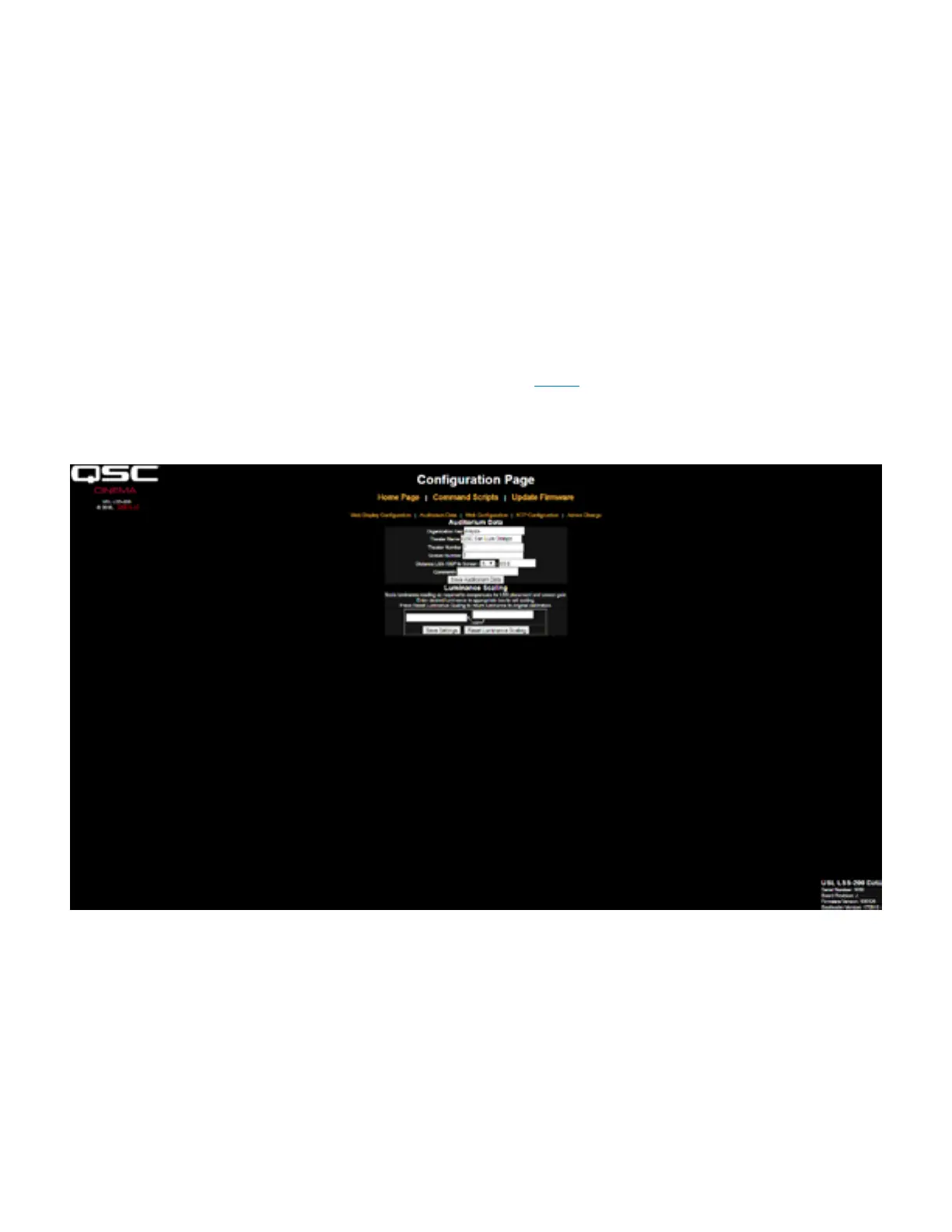USL LSS-200 handleiding
Handleiding
Je bekijkt pagina 11 van 34

7
TD-001538-01-A1
5. The first configuration page, shown above, allows you to determine how the home page will appear. The Light Table section determines how
the left side of the home page will appear (the side that is showing luminance, color, etc.). The home page can show up to 7 rows of light
information. The source of that information is set by the first column of the light table. You can select U.S. or metric units for temperature and
luminance. Select the data source for each line of the home page light display.
6. Set the name for each line of the home page light display. These may be in any language.
7. The light table of the home page supports a total of 7 data columns. The first column is always the current “live” measurement data. Additonal
columns hold reference measurements. Live data is copied to the reference measurement column by clicking on the header of the column on
the home page. Define a name for each desired data columns. The first column is always labeled LIVE.
8. The right side of this configuration screen allows reference column names to be defined for the SPL measurement. These behave the same as
the light reference measurements described in the previous step. Up to 14 SPL reference columns may be defined.
9. The LSS-200 determines the highest SPL it measured from midnight local time to midnight local time. The highest value is logged each night
at midnight. You can set a limit for the maximum SPL on this page. If this value is exceeded, the maximum SPL of the day will be shown in red
on the log.
10. The LSS-200 makes out of tolerance readings available to the QSC Ethernet Device Discoverer (see http://ftp.uslinc.com/?dir=ftp/Products/
EthernetDeviceDiscoverer ). Ethernet Device Discoverer “discovers” QSC products on the network. In addition, it shows status messages from
each device. If Etherernet Discoverer Log Review Days is set to 7 (as shown in Figure 6), Ethernet Device Discoverer will display any out of
tolerance readings logged in the past 7 days.
11. Once this data has been entered, click the “Save User Data” button to save the settings to the LSS-200.
12. Click the “Auditorium Data” link at the top of the page.
— Figure 7 — LSS-200 Auditorium Data
13. Enter the theater name, theater number (large groups often identify a particular theater by number), and the screen or auditorium number.
Note that the theater number and screen number must be numbers (not names). The “Organization Key” is used by the LSS Database software
to identify multiple theaters as part of company or organization. A particular LSS-200 can be uniquely identified by the OrgKey, Theater
Number, and Screen Number. The “Distance of LSS-200 to Screen” field is used when running the audio/video sync check to determine flash
to pop timing at the LSS-200, at the screen, and at the SMPTE reference point. Additional information about the auditorium can be entered
in the Comments field. These comments show up on the home page and are reported in the XML web services log data. Click the “Save
Auditorium Data” button to save the data. Ignore the luminance scaling section for now.
14. Click the Web Configuration link at the top of the page.
Bekijk gratis de handleiding van USL LSS-200, stel vragen en lees de antwoorden op veelvoorkomende problemen, of gebruik onze assistent om sneller informatie in de handleiding te vinden of uitleg te krijgen over specifieke functies.
Productinformatie
| Merk | USL |
| Model | LSS-200 |
| Categorie | Niet gecategoriseerd |
| Taal | Nederlands |
| Grootte | 6136 MB |





